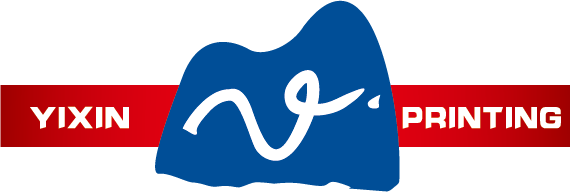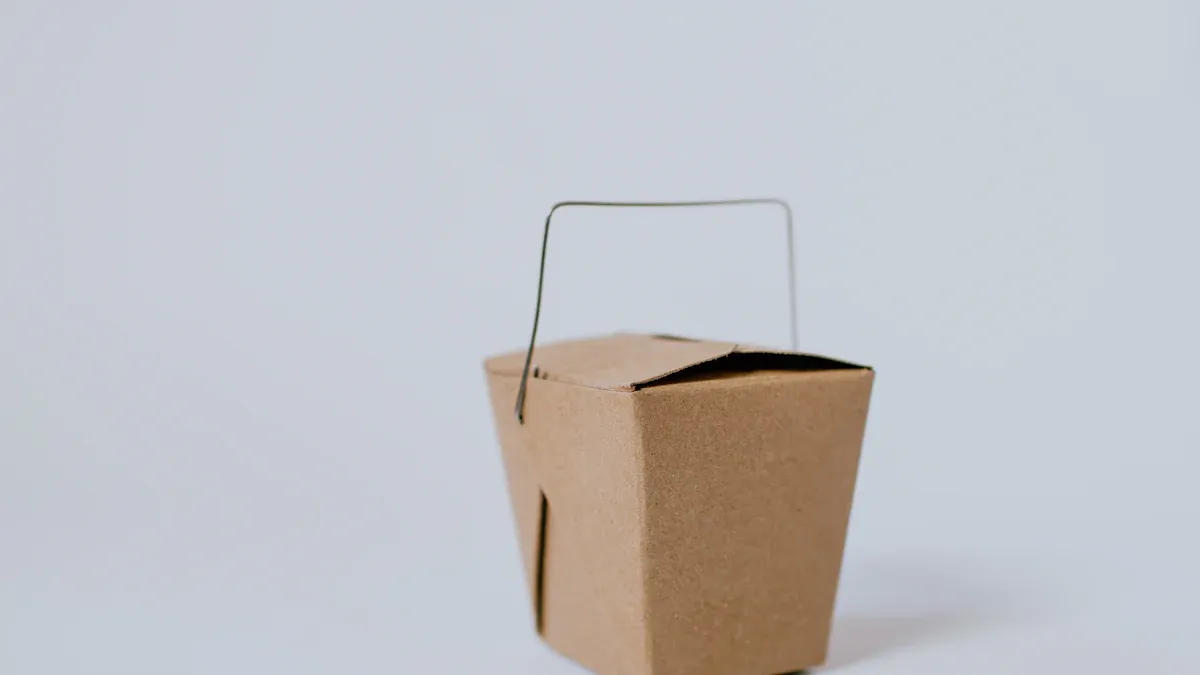Have you noticed how more brands are transitioning from plastic to paper-based materials? This shift towards paperization is transforming the packaging industry. Consumers are increasingly demanding eco-friendly options, and businesses are responding. Did you know that producing recycled paper generates 74% less air pollution and consumes 50% less water? Clearly, adopting paper isn’t just a trend—it’s a crucial step toward a sustainable future.
The global demand for plastic alternatives is rapidly increasing. In fact, 82% of consumers are willing to pay a premium for sustainable solutions, with 90% of Gen-Z leading this movement. Companies are now turning to innovative packaging options like custom paper boxes and paper gift boxes. These sustainable packaging solutions are setting the stage for a greener and more responsible tomorrow.
Key Takeaways
More people now choose eco-friendly packaging, with 78% caring about it.
Rules are forcing businesses to use paper as plastic bans grow.
New paper packaging ideas, like cool designs and biodegradable stuff, make it better and greener.
What Is Driving the Paperization Trend?
Consumer Demand for Sustainable Packaging
Have you noticed how much people care about the environment these days? It’s incredible. Shoppers are actively seeking sustainable options, and brands are stepping up. Did you know that 78% of U.S. shoppers prioritize sustainability when making purchases? Even more impressive, 95% of consumers are trying to live more sustainably. This shift is driving the demand for paper packaging, which is seen as a greener alternative to plastic.
Younger generations are leading this movement. About 65.7% of consumers aged 18-29 consider sustainability in their buying decisions. And here’s the kicker—70% of shoppers refuse to swap sustainable packaging for cheaper alternatives. That’s a clear sign that people value the environment over cost.
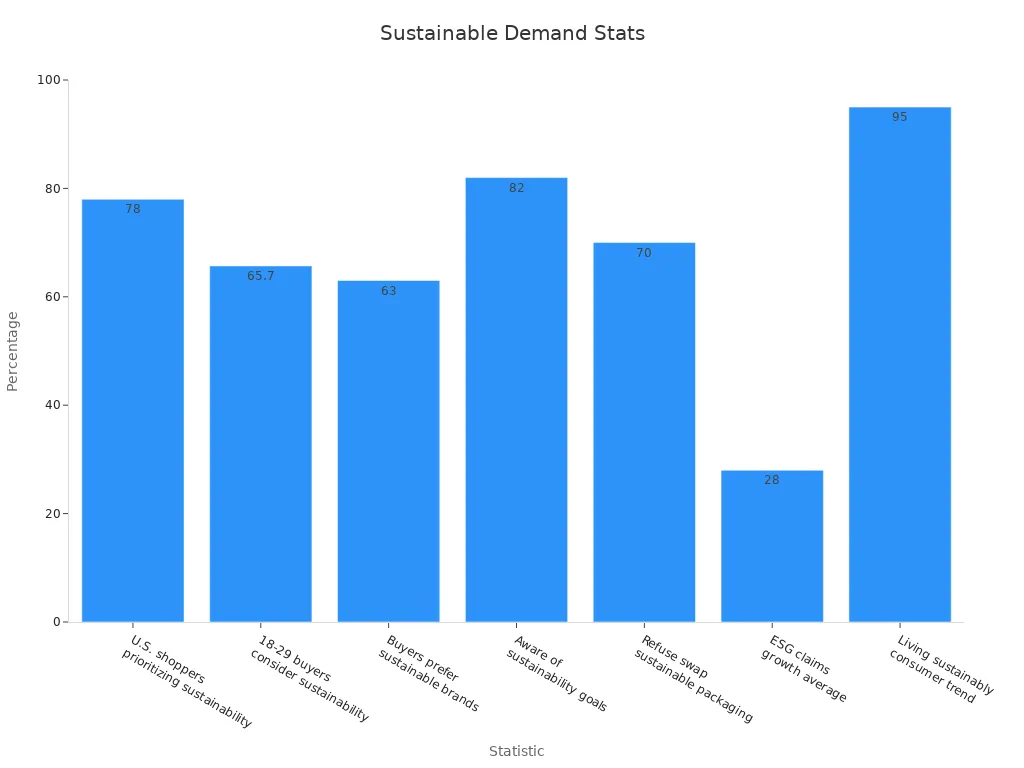
Regulatory Pressures on Plastic Packaging
Governments worldwide are cracking down on plastic. California and New York have banned single-use plastics, and the EU has strict policies pushing companies toward sustainability. These regulations are forcing businesses to rethink their packaging strategies.
Here’s a quick look at how regulations are shaping the industry:
These rules are not just about reducing waste. They’re also about encouraging innovation in fiber-based packaging and other sustainable solutions.
Innovations in Custom Paper Boxes and Paper Gift Boxes
The packaging industry is buzzing with creativity. Brands are focusing on green materials and biodegradable products. This trend is especially noticeable in custom paper boxes and paper gift boxes. People love personalized gifts, and the demand for customizable packaging is skyrocketing.
E-commerce is another big driver. With online shopping booming, companies are investing in attractive, eco-friendly packaging. Have you seen those gift boxes with magnetic closures or intricate patterns? They’re not just functional; they elevate the entire unboxing experience. These innovations make paper packaging not only sustainable but also stylish and versatile.
Paper Boxes vs. Plastic Packaging: A Comparative Analysis
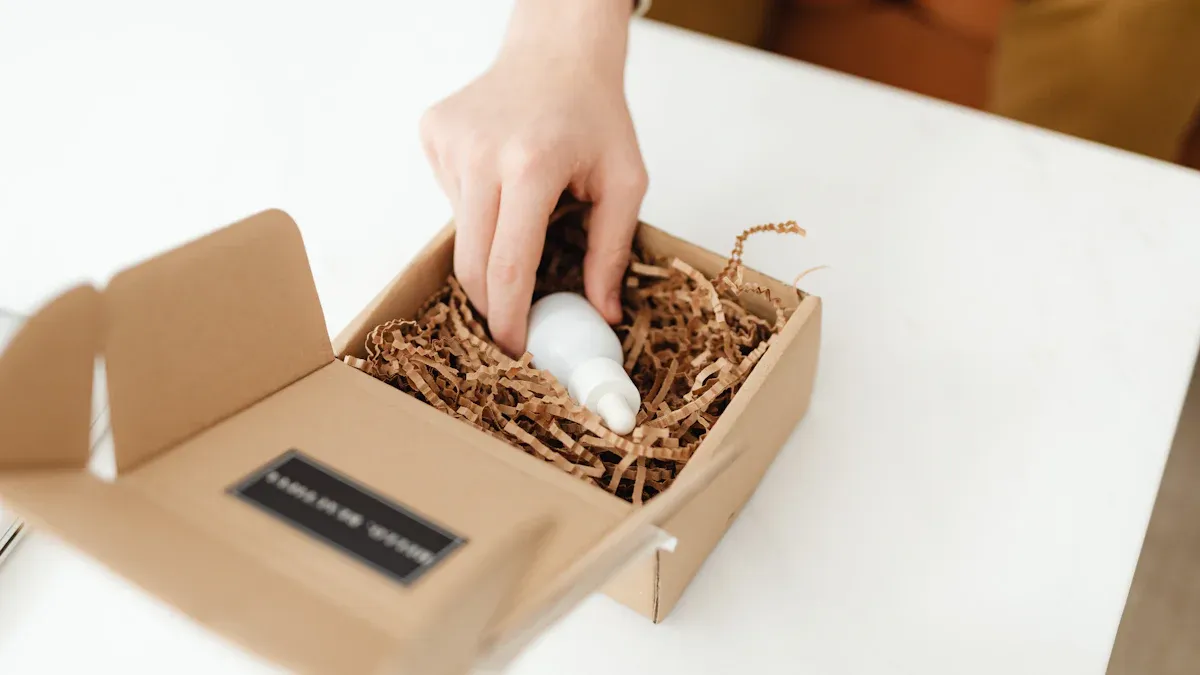
Environmental Impact and Sustainability
When I think about sustainability, paper packaging feels like the obvious choice. It’s biodegradable, recyclable, and comes from renewable sources. But let’s not ignore the challenges. Producing paper can be water and energy-intensive. On the other hand, plastic packaging, made from fossil fuels, contributes heavily to greenhouse gas emissions. It’s lighter, which makes transportation more efficient, but its low recycling rates and long degradation times in landfills are major drawbacks.
Here’s a quick comparison of their environmental performance:
Paper packaging is recyclable and biodegradable, but its weight can lead to higher transport emissions.
Plastic packaging requires less energy to produce and is lighter, but it has significant disposal challenges.
Unsustainable paper sourcing can lead to deforestation, while plastic’s durability means it lingers in the environment for centuries.
Cost and Scalability in Production
Cost is always a big factor. Paper packaging tends to be more expensive to produce than plastic. Why? It’s partly because of the energy and water required during production. However, as demand for sustainable materials grows, economies of scale are helping to bring costs down.
Plastic, on the other hand, is cheaper and easier to mass-produce. Its lightweight nature also reduces shipping costs. But here’s the catch: regulatory pressures and consumer demand for eco-friendly options are pushing companies to rethink their reliance on plastic. In the long run, investing in paper packaging could be more cost-effective as it aligns with sustainability goals.
Functionality and Versatility in Packaging
Paper boxes are incredibly versatile. They can be customized for different needs, whether it’s adding moisture barriers or reinforcing strength. I’ve seen paperboard packaging used for everything from beverage multipacks to e-commerce shipments. It’s not just functional—it’s also a branding opportunity. Companies can print high-impact designs on paper boxes, creating a memorable unboxing experience.
Here’s a breakdown of what makes paper packaging so adaptable:
Plastic packaging does have its strengths, like being lightweight and durable. But paper’s ability to combine functionality with sustainability gives it a clear edge in today’s market.
Real-World Examples of the Paperization Trend
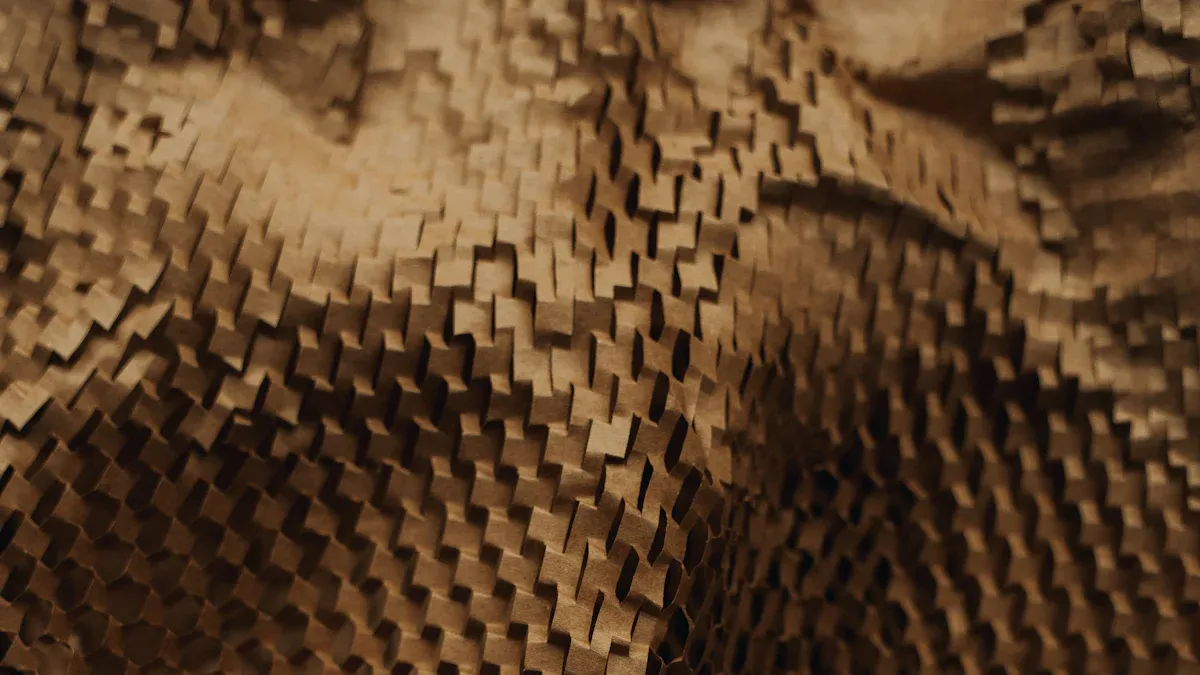
Companies Adopting Sustainable Packaging Solutions
I’ve noticed that some of the biggest brands are leading the charge when it comes to sustainable packaging. For instance, McDonald’s has pledged to use 100% recycled or certified sustainable fiber-based packaging by 2025. That’s a huge step for a global giant! And they’re not alone. Many companies are making similar commitments to reduce their environmental footprint.
Here’s a quick list of brands that are embracing sustainable packaging:
Zara’s Green Alternatives for Packaging
Puma's Clever Little Bag
Gucci’s 100% Recyclable Luxury Experience
Pangea Organic's Plantable Packaging
Jaden Smith's Plant-Based Water Bottle
The White Company’s Eco Commitment
Origin X Performance’s Brand DNA
Calvin Klein’s Zero Waste Aspiration
ASOS Signature Sustainable Bag
Seasalt’s Sustainable Box of Socks
These companies are proving that sustainable packaging isn’t just a trend—it’s becoming the norm. Whether it’s custom paper boxes or paper gift boxes, brands are finding creative ways to combine functionality with sustainability.
Technologies Advancing Paper-Based Packaging
Technology is playing a huge role in the rise of paper-based packaging. The growth of e-commerce and global trade has pushed companies to innovate. I’ve seen businesses use digital tools like IoT, AI, and big data to improve their operations and sustainability efforts. These advancements make it easier to design packaging that’s not only functional but also recyclable and eco-friendly.
One exciting trend is the integration of circular economy principles into packaging design. By focusing on recyclability and reusability, companies are reducing waste and creating products that fit into a sustainable lifecycle. Yixin Printing, for example, is at the forefront of this movement, offering luxury paper box solutions that are both stylish and sustainable.
It’s clear that technology and innovation are driving the future of sustainable packaging. From custom paper boxes to paper gift boxes, the possibilities are endless.
Challenges in the Paper Packaging Industry
Sourcing Sustainable Raw Materials
Finding sustainable raw materials for paper packaging is no easy task. I’ve noticed that the growing demand for eco-friendly options has put a strain on the supply chain. Essential resources like pulp and recycled paper are in short supply, making it harder for companies to meet their production needs. This limited availability often drives up costs, especially for smaller businesses trying to stay competitive.
Here’s a quick look at the main challenges in sourcing sustainable materials:
These challenges highlight the need for innovation and collaboration to make sustainable sourcing more accessible.
Ensuring Recyclability and Waste Management
Recycling plays a huge role in making paper packaging sustainable. Did you know that in 2018, the recycling rate for paper and paperboard reached 68.2%? That’s a big jump from 42.8% in 2000! Recycling efforts also reduced over 155 million metric tons of CO2 emissions, which is like taking 33 million cars off the road for a year. Impressive, right?
But here’s the catch: not all paper packaging is easy to recycle. Some products, like those with coatings or adhesives, can contaminate the recycling process. This creates waste and undermines sustainability goals. To tackle this, companies need to design packaging with recyclability in mind. It’s all about creating alternatives that fit into a circular economy.
Balancing Costs with Sustainability Goals
Balancing costs with sustainability is a tricky game. On one hand, companies want to reduce their environmental impact. On the other, they need to stay profitable. Rising costs for raw materials and compliance with new regulations make this even harder. Inflation and price volatility add another layer of complexity.
Here’s how financial and sustainability metrics often clash:
Despite these challenges, I believe companies can find a middle ground. By investing in innovative solutions and scaling up production, they can align their financial goals with sustainability. It’s not easy, but it’s worth it for a greener future.
The Future of Sustainable Packaging
Market Growth Predictions for Paper Packaging
The paper packaging market is growing faster than I ever imagined. It’s exciting to see how demand for eco-friendly solutions is driving this expansion. By 2025, the market value is expected to hit $379.60 billion, growing at a compound annual growth rate (CAGR) of 10.7%. By 2030, it’s projected to reach $452.35 billion.
Here’s a quick snapshot of the growth trajectory:
The global paper packaging market is also expected to grow from $410.5 billion in 2024 to $596.5 billion by 2034, driven by industries like food and pharmaceuticals. It’s clear that paper-based packaging is becoming a cornerstone of sustainable practices.
The Role of Circular Economy in Paperization
I love how the circular economy is reshaping packaging. It’s all about creating systems where materials are reused, recycled, and regenerated. Paper-based packaging fits perfectly into this model. It’s renewable, recyclable, and biodegradable, making it an ideal choice for reducing waste.
Companies like Google and Amazon are already adopting paper packaging to cut down on plastic waste. The Sustainable Packaging Coalition even identified the "paperization of everything" as the top trend in its 2024 report. This shift isn’t just good for the planet—it’s good for business too.
Will Paper Boxes Dominate the Packaging Industry?
I think paper boxes have a real shot at dominating the packaging industry. They’re versatile, sustainable, and increasingly cost-effective. With over 64% of UK consumers preferring products with sustainable packaging, the demand is undeniable.
But will paper completely replace plastic? Probably not. Plastic still has advantages in certain applications. However, as more companies embrace paper-based solutions and circular economy principles, I believe paper boxes will take center stage in the push for sustainability.
Paper boxes are clearly gaining momentum as a sustainable alternative to plastic. I’ve seen this shift driven by innovation, consumer demand, and regulatory changes.
The market is growing fast, especially in food, healthcare, and e-commerce.
Lightweight, durable designs make them perfect for online shopping and delivery.
Advances in technology keep improving their appeal.
While challenges like raw material sourcing and recyclability remain, I believe the future of packaging will blend paper with other eco-friendly materials. Circular economy principles will guide this transformation, ensuring a greener, more sustainable world.
FAQ
What makes paper boxes more sustainable than plastic packaging?
Paper boxes are biodegradable, recyclable, and made from renewable resources. Unlike plastic, they break down naturally, reducing environmental harm. Plus, they align with circular economy principles. 🌱
Can paper boxes handle heavy or fragile items?
Absolutely! Modern paper boxes are designed for strength and durability. Reinforced options and moisture-resistant coatings make them perfect for shipping heavy or delicate products.
Are paper boxes customizable for branding?
Yes, they’re highly customizable! You can print vibrant designs, logos, or even add unique textures. They’re a fantastic way to enhance your brand’s identity and customer experience. 🎨
